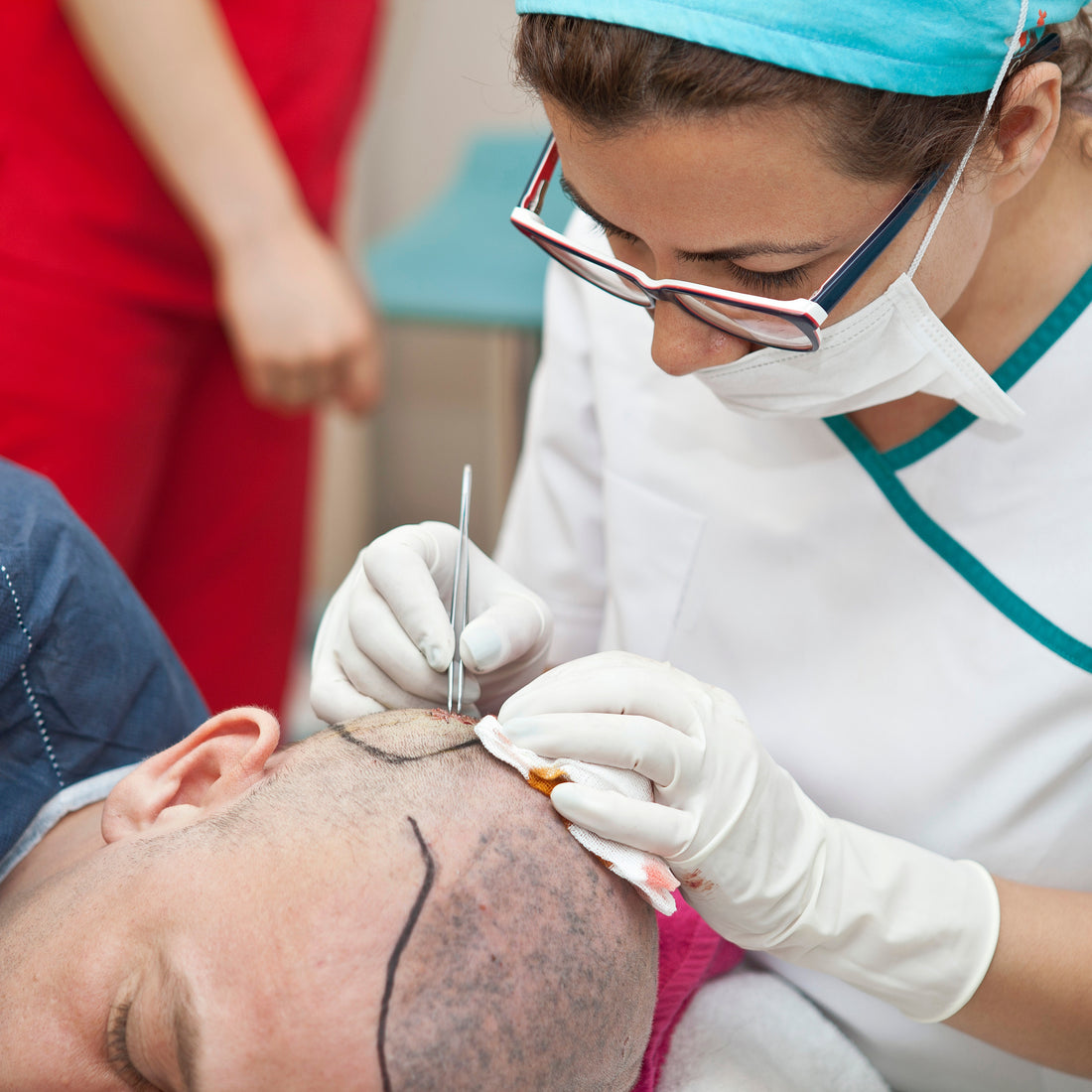
Hair Transplant vs Natural Hair: An In-Depth Guide
Hair loss affects millions worldwide, sparking interest in solutions like hair transplants and natural hair restoration methods. While both options aim to restore hair, they differ in approach, results, and long-term impact. In this guide, we'll break down the essential facts about hair transplant, compare them to natural hair options, and explore what you should know before making a decision.
1. What is a Hair Transplant?
A hair transplant is a surgical procedure that involves transferring hair follicles from a donor area (usually the back of the scalp) to areas where hair is thinning or balding. The two primary techniques are Follicular Unit Extraction (FUE) and Follicular Unit Transplantation (FUT). Both methods provide long-lasting results, but the process can be costly and requires a skilled surgeon.

2. How Does Natural Hair Restoration Work?
Natural hair restoration focuses on improving hair growth without surgical intervention. Common methods include using hair growth supplements, scalp massages, and topical treatments like minoxidil or finasteride. These techniques aim to slow down hair loss and stimulate hair regrowth but may not be as effective for advanced balding.

3. Comparing Hair Transplant to Natural Hair Solutions
When comparing hair transplant to natural methods, the most significant difference is the time and effectiveness. A hair transplant provides immediate, visible results, while natural hair restoration requires consistent effort and may not work for everyone. Transplants are permanent, whereas natural treatments often need ongoing use to maintain results.
4. Benefits of Hair Transplant
Hair transplants offer several benefits:
- Permanent Solution: Once transplanted, hair typically lasts a lifetime.
- Natural Appearance: With modern techniques, results look natural and blend with existing hair.
- Boosts Confidence: Many people report a significant boost in self-esteem after the procedure.
5. Downsides of Hair Transplants
While hair transplants are effective, there are potential downsides:
- High Cost: Procedures can cost between $4,000 and $15,000, depending on the extent of hair loss.
- Surgical Risks: As with any surgery, risks include infection, scarring, and potential graft failure.
- Recovery Time: The healing process can take several weeks, during which time swelling, pain, and redness are common.
6. Natural Hair Restoration Methods
Common natural methods include:
- Diet and Supplements: Nutrients like biotin, zinc, and omega-3 fatty acids promote healthy hair.
- Scalp Massages: Stimulating blood flow to the scalp can encourage hair growth.
- Topical Treatments: Over-the-counter products, such as minoxidil, can slow hair loss.
Shop and Find your Hair Supplements on : Deriak - Vitamins & Supplements
While these methods are less invasive, results vary, and patience is key.
7. Cost Comparison
Hair transplants are more expensive than natural remedies. A hair transplant can cost thousands, while natural treatments, such as topical products, supplements, or massage tools, are relatively inexpensive but must be maintained for long-term effects.
8. Risks and Side Effects
Both hair transplants and natural methods have potential side effects:
- Hair Transplant Risks: Scarring, infection, graft failure, and unnatural hairlines can occur.
- Natural Treatment Side Effects: Some people may experience irritation or allergic reactions to topical products like minoxidil.
9. Ideal Candidates for Hair Transplants
Good candidates for hair transplants are individuals with enough donor hair, typically those experiencing male-pattern baldness or female-pattern hair loss. People with widespread thinning or patchy hair loss may not be suitable for the procedure and should explore natural options instead.
10. Long-Term Results
The main advantage of a hair transplant is the permanence of the results. Once the transplanted hair grows, it continues to grow for life. However, it’s essential to consider that natural hair restoration methods may require lifelong maintenance. Hair transplants can also result in a more consistent hairline and fullness compared to natural options.
Conclusion: Which Option Is Best for You?
Choosing between a hair transplant and natural hair restoration depends on several factors, including your level of hair loss, budget, and personal preference. Hair transplants provide a permanent, quick fix but come with surgical risks and a hefty price tag. Natural methods are non-invasive and more affordable but require time and consistent effort, with varying results. Consult a hair specialist to determine the best option based on your needs.
FAQs
1. How long do hair transplants last?
Hair transplants are considered permanent because the transplanted follicles are resistant to hair loss.
2. Is there any scarring with hair transplants?
Yes, FUT can leave a linear scar, while FUE leaves tiny, dot-like scars that are less noticeable.
3. Can women undergo hair transplants?
Yes, women can have hair transplants, especially those experiencing female-pattern hair loss.
4. Are there non-surgical alternatives to hair transplants?
Yes, alternatives include minoxidil, finasteride, and platelet-rich plasma (PRP) therapy.
5. How long does it take to recover from a hair transplant?
Initial recovery takes about 1-2 weeks, but full results can take up to a year.
6. What is the best age for a hair transplant?
The ideal age is typically 30-40, as hair loss patterns are more established.
Check more at : Hair Loss Resource Center
